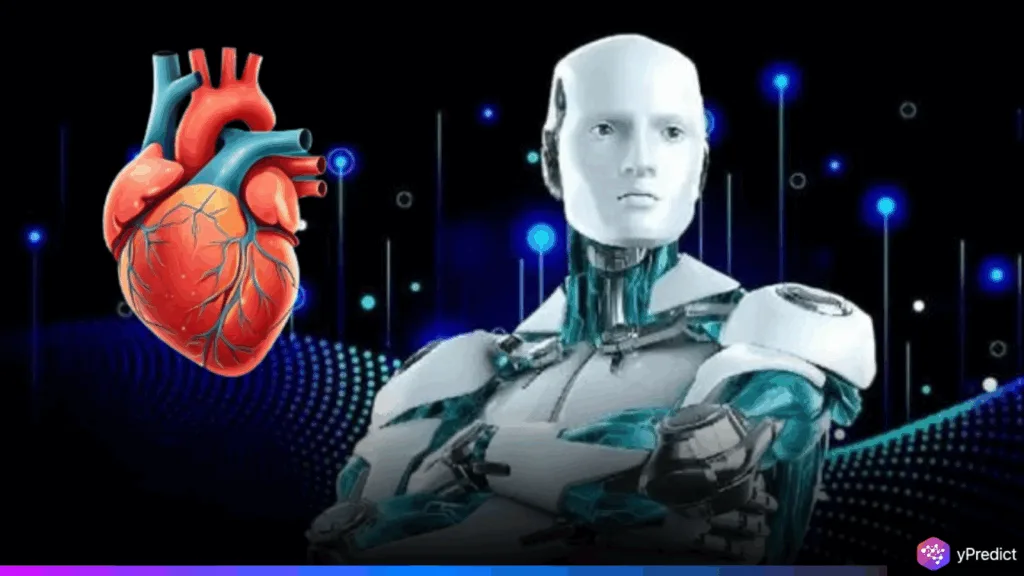
A new AI-powered test may transform how heart disease is diagnosed before symptoms appear. Developed in Germany and studied in the UK, the Cardisio test uses five electrodes placed on the chest and back to assess the heart’s function in three dimensions, a significant leap from traditional ECGs. Dr. Simon Rudland, the lead author and a visiting professor at the University of Suffolk, called the results “exciting.” The technology delivers a color-coded result, green, amber, or red, allowing clinicians to identify high-risk patients quickly. The study involved 628 asymptomatic adults and showed promising accuracy in predicting cardiovascular disease.
Study Results Highlight Accuracy and Efficiency of Cardisio AI Test
In the recent study, the Cardisio test was administered to 628 asymptomatic adults considered at risk for cardiovascular disease. The AI analyzed heart rhythm, structure, and blood flow, achieving a positive predictive accuracy of 80% and a negative predictive accuracy of 90.4%. Fewer than 2% of the tests failed, and results showed a strong link between red scores and referrals to cardiology clinics. Dr. Rudland emphasized the importance of further validation but remains optimistic. “We need more work with more patients to go through the algorithm,” he said. However, the early data suggests the technology could revolutionize primary care by making diagnostics faster, smarter, and more precise.
The system offers several advantages. It’s non-invasive, only takes 10 minutes, and processes data far beyond the capacity of a human doctor. By helping general practitioners determine which patients truly need specialist care. The test could dramatically reduce waiting times in overburdened hospital systems. Published in BJGP Open Journal, the study concluded that this AI-based test is more effective than a traditional 12-lead ECG in identifying hidden cardiovascular problems, especially for high-risk, underserved populations. The potential pilot rollout will likely begin in Suffolk or North Essex, targeting women specifically.
AI-Powered Care Pathways Could Reduce NHS Strain
Beyond its diagnostic accuracy, the Cardisio test could reshape how care is delivered in the NHS. According to Dr. Rudland, it offers an opportunity to shift treatment and referral decisions to primary care settings, reducing unnecessary specialist appointments. “This test supports referrals that are more appropriate or more specific to a patient’s problem,” he noted. That means faster treatment for those at risk and fewer delays for others, addressing NHS backlogs effectively.
Conventional cardiovascular diagnostics has costly equipment and skilled experts and also requires a visit to a hospital. In contrast, Cardisio can be used across clinics in communities and analyzed using AI tools instantly. The current three-dimensional model of heart functioning catches the slight electrical abnormality missed by the existing ECGs; thus, the intervention of such patients can be done early enough before such patients are recognized.
The study also emphasized that the AI’s strength lies in its ability to process vast amounts of data. And detecting patterns invisible to the human eye. The use of such tools could also aid in digital triage. Guiding GPs to refer only those who need further care while providing reassurance to others. As Health Secretary Wes Streeting recently said, the NHS is “harnessing AI tools to deliver faster and smarter care”; this test may be one of its most promising examples.
Next Steps and Broader Implications
The study opens the door to larger trials and real-world pilots. A regional pilot may soon launch in Suffolk or North Essex, focusing on women’s heart health, which is often underdiagnosed. Cardisio is a potential game-changer not only in the context of delivering quality cardiovascular care. But also in overall transformation, as AI tests become an essential diagnostic component in the primary care environment. Although further data is required, the rates of accuracy and limited time in testing represent it as a powerful option for early-detection strategies.






